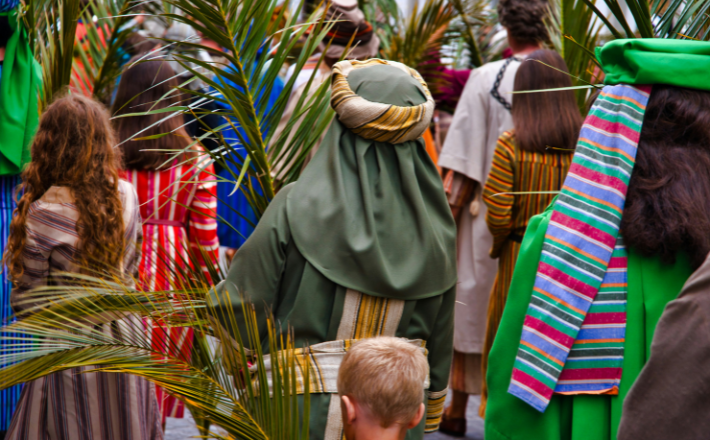Commentary on Mark 11:1-11
Palm procession is a revolutionary act.1
I attend a liturgically inclined, sensorial, and embodied congregation. We worship with the explicit intent of encountering the divine with all of our senses. We see the divine through stained glass, chalices, pews, bulletin boards, and other visual worship paraphernalia. We smell the divine through the incense and the wood of the pews and old furniture. We touch and eat the divine through the Eucharist. Of course, we hear the voice of the congregation singing together and our ministers who have been reflecting upon God’s grace with the community.
One of the most exciting and profound liturgical embodiments of our church is the Palm Sunday procession around our church block. It is exciting because we as the church get to invite, show, and legally disrupt the normal flow of traffic if even for a brief moment during Sunday morning. Also, we are loud and deliberately ornate. We start our procession from the church by waving the palm branches. Then we chant and sing as loudly as we can. Some people of the neighborhood wave back at us. Some roll their eyes. Some are nonchalant about it. The police officers are irritated with the procession but can’t do anything about it because it ends as quickly as it started.
It is short-lived, but it is revolutionary. It is revolutionary not because we caused some kind of huge commotion or change. Rather, we disrupted the normalcy of things by transgressing the borders between the church and the world, the liturgical and the mundane, the divine and the created, the loud and the silenced.
This is also what I see in Mark 11:1–11.
The so-called triumphal entry of Jesus into Jerusalem, as many commentaries and authors already espouse, is not triumphant at all. Among many other reasons, the procession is not fully triumphant because it lacks the finale of a royal, imperial, and even messianic procession during the time of Jesus. The procession should have ended with a grand ritual/sacrifice, expulsion of former vestiges of power, and/or even a banquet celebration. None of them happened.
Instead, Jesus looked around the temple area and disappeared to Bethany (verse 11). This anticlimactic ending could be either a reflection of Mark’s take on the suffering Messiah, or a manifestation of postcolonial mimicry in which Jesus is subverting the Roman Empire by mimicking and mocking such imperial procession. I would like to offer a further exposition of the latter.
Revolutionary and subversive acts do not have to be grandiose or immediately altering. They can be small, seen but immediately unseen, loud and expected but bewilderingly unconventional. In that way, the powers that be cannot control, stop, or even anticipate the next revolutionary act.
The so-called triumphant procession of Jesus is intentionally incomplete and unconventional because the oppressed fight back in ways that are unexpected. They do so because it is a survival strategy that protects the oppressed from the backlash of the oppressors. In other words, Mark 11:1–11 is depicting to us the revolutionary side of Jesus and his disciples who performed their unconventional jab against the empire. This is their act of solidarity with the oppressed.
So for the upcoming Palm Sunday, please try this revolutionary act. Disrupt the indifference, distract the oppressive. Perhaps someone out there is waiting for your invitation. Perhaps someone in your church is waiting for the church to become a source of positive change in the world.
Notes
- Dong Hyeon Jeong, “Jesus’ ‘Triumphal Entry’ as Flash Mob Event: Molecular ‘r’evolution in Mark 11:1–11,” The Bible and Critical Theory 15, no. 2 (2019): 1–19.


March 24, 2024